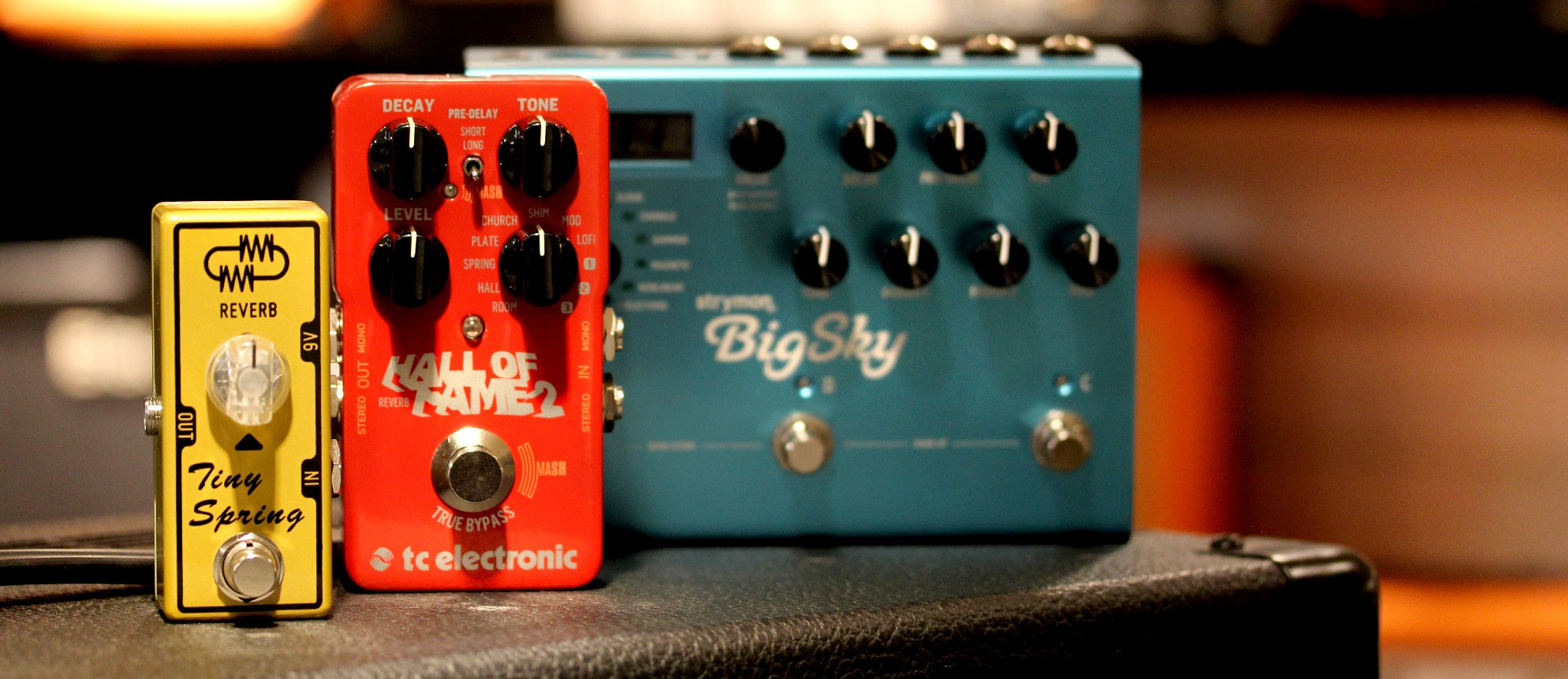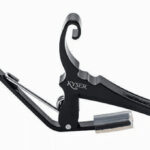Can Bass Use Guitar Pedals? Absolutely! At guitarplayers.net, we believe in exploring sonic boundaries, and using guitar pedals on bass opens up a world of unique and inspiring tones for bass guitar players. Discover how to creatively shape your bass sound with guitar effects pedals, and unlock new dimensions in your bass playing.
1. What is the Difference Between Guitar Pedals and Bass Pedals?
The primary difference lies in the frequencies they’re designed to process. Bass pedals are engineered to handle lower frequencies inherent in bass guitars, while guitar pedals are optimized for higher frequency ranges. However, this doesn’t mean you can’t experiment by using guitar pedals on a bass guitar. Many bassists find creative ways to use guitar effects to achieve unique sounds, so don’t let the intended use stop you.
- Frequency Response: Bass pedals typically have a flatter or bass-boosted frequency response to accommodate the lower range of bass guitars. Guitar pedals might cut some of the low end, which can sometimes be desirable for a tighter bass tone.
- EQ Curves: Bass guitars have different EQ curves than guitars due to factors like heavier strings, longer scale lengths, and different woods. Bass pedals are designed to complement these characteristics, while guitar pedals may react differently.
- Dry Output: Some bass pedals include a dedicated ‘dry’ output, allowing bassists to retain the original, unaffected signal alongside the processed signal. This is beneficial for maintaining clarity and low-end presence in the overall sound.
 Electro-Harmonix Deluxe Bass Big Muff pedal with controls for tone and sustain
Electro-Harmonix Deluxe Bass Big Muff pedal with controls for tone and sustain
2. Is it Safe to Use Guitar Pedals with a Bass Guitar?
Yes, it is perfectly safe to use guitar pedals with a bass guitar. There is no risk of damaging your bass or the pedal, so feel free to experiment without worry.
From a technical standpoint, using guitar pedals with a bass guitar is generally safe. The impedance and signal levels are compatible, so you don’t have to worry about damaging your equipment. However, keep in mind that the tonal results may vary, and some guitar pedals may not sound as good on bass as they do on guitar.
3. How Do Guitar Pedals Sound with a Bass?
The sound of guitar pedals with a bass varies depending on the pedal type and your personal preference. It’s all about experimentation and finding what works best for your sound.
3.1. Using Guitar Distortion Pedals with a Bass
Most distortion pedals can sound great with a bass, offering various levels of saturation and grit. However, some pedals might cut the low end, so it’s important to choose wisely and experiment to find the right balance. A fuzz pedal can give you a thick, saturated tone, while a metal distortion pedal can provide extreme amounts of gain.
- Fuzz Pedals: These pedals add a thick, saturated distortion to the bass signal, resulting in a warm and aggressive tone.
- Overdrive Pedals: These pedals offer a milder form of distortion, adding subtle grit and harmonic richness to the bass tone.
- Distortion Pedals: These pedals provide a more aggressive and pronounced distortion effect, suitable for heavier genres of music.
3.2. Using Guitar Compressor Pedals with a Bass
Compression is a universal effect that works well with both guitar and bass. It evens out the dynamics of the signal, resulting in a more consistent and controlled sound. While some compressors are designed specifically for bass, most guitar compressors can be used effectively on bass as well.
- Sustain: Compression increases sustain by bringing up the level of quieter notes, making them more audible.
- Attack: Compression can shape the attack of notes, making them punchier or smoother depending on the settings.
- Dynamic Range: Compression reduces the overall dynamic range of the signal, making it easier to control the volume and prevent clipping.
3.3. Using Guitar Octave Pedals with a Bass
Octave pedals can be a bit tricky with bass due to tracking issues. It is important to experiment to see what sounds best for your setup. Some octave pedals track the lower frequencies of a bass better than others, so you may need to try a few different options. If you want a crystal-clear octave effect, it’s best to go with a bass-specific octave pedal.
- Sub-Octave: This effect adds a note one octave below the original signal, creating a deep and thunderous tone.
- Upper-Octave: This effect adds a note one octave above the original signal, adding brightness and shimmer to the bass tone.
- Tracking: The ability of the pedal to accurately detect and process the original signal, especially in the lower frequencies of the bass.
3.4. Using Guitar Modulation Pedals with a Bass
Modulation effects such as chorus, flanger, and phaser can sound great on bass, adding depth and texture to the sound. However, it’s important to be mindful of the feedback settings, as excessive feedback can result in unwanted noise or harshness. In general, you shouldn’t have any problems using modulation pedals for guitar with a bass.
- Chorus: This effect creates a shimmering, ethereal sound by adding a slightly detuned copy of the original signal.
- Flanger: This effect creates a swirling, jet-like sound by sweeping a comb filter across the frequency spectrum.
- Phaser: This effect creates a sweeping, swirling sound by shifting the phase of the signal at different frequencies.
3.5. Using Guitar Delay & Reverb Pedals with a Bass
Delay and reverb pedals can add ambience and depth to a bass sound, creating a sense of space and atmosphere. When using these effects, it’s important to be mindful of the low-end frequencies, as too much low end in the affected signal can result in a muddy or cluttered sound.
- Delay: This effect repeats the original signal after a set amount of time, creating a rhythmic echo.
- Reverb: This effect simulates the sound of a space, adding a sense of depth and ambience to the signal.
 Using guitar reverb pedals with a bass creating a spacious sound
Using guitar reverb pedals with a bass creating a spacious sound
4. What’s the Difference Between Guitar Pickups and Bass Pickups?
Bass pickups are designed to capture the lower frequencies of a bass guitar, while guitar pickups are optimized for the higher frequencies of a guitar. Bass pickups typically have a wider frequency response and a higher output than guitar pickups, allowing them to capture the full range of the bass guitar. Guitar pickups, on the other hand, are designed to emphasize the midrange and treble frequencies, resulting in a brighter and more articulate sound.
- Frequency Response: Bass pickups are designed to capture the lower frequencies of a bass guitar, while guitar pickups are optimized for the higher frequencies of a guitar.
- Output Level: Bass pickups typically have a higher output level than guitar pickups, allowing them to drive the amplifier harder and produce a louder sound.
- Tonal Characteristics: Bass pickups tend to have a warmer and more rounded tone, while guitar pickups have a brighter and more articulate sound.
5. On the Flip Side, Can You Use Bass Pedals with a Guitar?
Yes, you can use bass pedals with a guitar, and it can lead to some interesting and unique tones. Bass pedals are designed to emphasize different frequencies than guitar pedals, which can result in a sound that is far removed from what you’re used to.
When using bass pedals with a guitar, experiment with different settings to find the sweet spots. Some bass pedals may sound muddy or undefined on guitar, while others may add a unique flavor to the tone.
6. Famous Bassists Who Use Guitar Pedals
Many famous bassists have used guitar pedals to create their signature sounds. Here are a few notable examples:
- Flea (Red Hot Chili Peppers): Known for using a variety of guitar pedals, including the Digitech Whammy and Electro-Harmonix POG.
- Mike Kerr (Royal Blood): Achieves his unique guitar-like tone using an array of pedals, including a Boss PS-6 Harmonist.
- Pino Palladino: Legendary session player known for using a Boss OC-2 Octaver and Electro-Harmonix Pitch Fork.
- Duff McKagan (Guns N’ Roses): Partial to guitar chorus pedals, including the TC Electronic Corona Chorus and Ibanez CS9.
 Mike Kerr of Royal Blood playing bass with a unique guitar-like tone
Mike Kerr of Royal Blood playing bass with a unique guitar-like tone
7. Exploring Tone: Tips for Using Guitar Pedals with Bass
Experimentation is Key: Don’t be afraid to try different combinations of guitar pedals with your bass to discover new and exciting sounds. You may be surprised at what you can create!
7.1. Start with the Basics
Begin by experimenting with a few basic guitar pedals that are commonly used on bass, such as overdrive, distortion, and compression. These effects can add subtle nuances or aggressive tones to your bass sound.
7.2. Blend Dry and Wet Signals
Many bassists prefer to blend the dry (unaffected) signal with the wet (affected) signal to retain the clarity and low-end punch of their bass tone. This can be achieved by using a pedal with a blend control or by running two separate signal chains and mixing them together.
7.3. Pay Attention to EQ
When using guitar pedals with bass, it’s important to pay attention to the EQ settings of both the pedals and the amplifier. Some guitar pedals may cut the low end, so you may need to compensate by boosting the bass frequencies on your amp or using an EQ pedal to shape the overall sound.
7.4. Consider Pedal Order
The order in which you chain your pedals together can have a significant impact on the overall sound. Experiment with different pedal orders to find what works best for your setup. For example, some bassists prefer to place compression before distortion to even out the signal and create a more consistent tone, while others prefer to place it after distortion to tame any harshness or spikes in volume.
7.5. Use a Bass-Specific DI Box
A bass-specific DI (Direct Injection) box can help to preserve the integrity of your bass signal and prevent any loss of tone when running through a chain of guitar pedals. A good DI box will also provide a balanced output for connecting to a mixing console or recording interface.
7.6. Explore Different Pedal Types
Don’t limit yourself to just the basic effects. Experiment with modulation, delay, and reverb pedals to add depth, texture, and ambience to your bass sound. Guitar modulation pedals, such as chorus and flanger, can create unique and interesting textures when used subtly on bass. Delay and reverb pedals can add a sense of space and atmosphere to your sound, making it sound larger and more immersive.
8. Unlocking New Sounds: Creative Applications
Using guitar pedals with bass opens up a world of creative possibilities. Here are a few ideas to get you started:
8.1. Add Grit and Grind
Use overdrive or distortion pedals to add some grit and grind to your bass tone. This can be especially effective for rock, metal, and other genres where a more aggressive bass sound is desired. Experiment with different levels of gain and tone settings to find the perfect amount of dirt for your sound.
8.2. Create Unique Textures
Experiment with modulation pedals like chorus, flanger, and phaser to create unique and interesting textures with your bass. These effects can add a sense of movement and depth to your sound, making it sound more dynamic and engaging.
8.3. Add Ambience and Depth
Use delay and reverb pedals to add ambience and depth to your bass sound. This can be especially effective for creating a sense of space and atmosphere in your music. Experiment with different delay times and reverb settings to find the perfect amount of ambience for your sound.
8.4. Emulate Guitar Tones
Use guitar pedals to emulate guitar tones on your bass. This can be a fun and creative way to expand your sonic palette and create unique and unexpected sounds. Try using distortion, fuzz, or wah pedals to make your bass sound more like a guitar.
8.5. Layer Multiple Effects
Layer multiple effects together to create complex and evolving soundscapes. This can be a great way to add depth and interest to your music and create a unique sonic signature. Experiment with different combinations of effects to find what works best for your sound.
9. Where to Learn More and Connect
Ready to dive deeper into the world of guitar and bass?
- Explore Lessons: guitarplayers.net offers a wealth of lessons for guitar and bass players of all levels.
- Read Reviews: Make informed decisions by checking out our in-depth reviews of guitars, amps, and pedals.
- Discover Sheet Music: Find the perfect songs to play with our extensive collection of sheet music and tabs.
- Join the Community: Connect with fellow musicians in our vibrant forum, share your experiences, and learn from others.
Address: 1140 Boylston Street, Boston, MA 02215, United States. Phone: +1 (617) 747-2261. Website: guitarplayers.net.
10. Frequently Asked Questions (FAQ)
10.1. Will Using Guitar Pedals Damage My Bass?
No, using guitar pedals will not damage your bass. The signal levels are compatible, so there’s no risk of harm.
10.2. Can I Use a Guitar Amp for My Bass?
While possible, it’s not ideal. Guitar amps aren’t designed to handle the low frequencies of a bass, which can result in a weak or distorted sound.
10.3. What Type of Guitar Pedals Work Best with Bass?
Overdrive, distortion, compression, chorus, flanger, delay, and reverb pedals can all work well with bass, depending on the desired sound.
10.4. Do I Need a Special Cable for Bass Pedals?
No, standard instrument cables will work fine for connecting your bass to guitar pedals.
10.5. Can I Use a Power Supply Designed for Guitar Pedals with My Bass Pedals?
Yes, as long as the power supply meets the voltage and current requirements of your bass pedals.
10.6. Are There Any Guitar Pedals I Should Avoid Using with Bass?
Some guitar pedals, such as those designed for high-gain distortion or extreme EQ settings, may not sound as good on bass.
10.7. How Can I Prevent Loss of Low End When Using Guitar Pedals with Bass?
Use a pedal with a blend control to mix the dry and wet signals, or use a bass-specific EQ pedal to compensate for any loss of low end.
10.8. Can I Use a Multi-Effects Pedal Designed for Guitar with My Bass?
Yes, but keep in mind that some of the effects may not be optimized for bass frequencies.
10.9. Where Can I Find More Information About Using Guitar Pedals with Bass?
guitarplayers.net is a great resource for learning more about using guitar pedals with bass.
10.10. Can I Use Bass Pedals with Other Instruments, Such as Keyboards or Vocals?
Yes, bass pedals can be used with other instruments to create unique and interesting sounds.
Using guitar pedals with bass is a rewarding experience. Don’t be afraid to experiment and find what works best for you. Join the guitarplayers.net community to share your discoveries and learn from fellow musicians! Let’s explore the world of sonic possibilities together!

